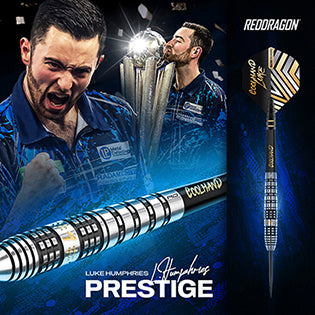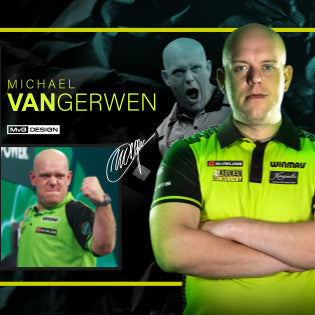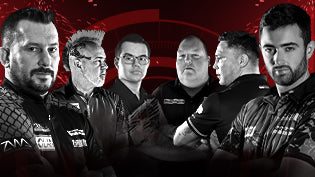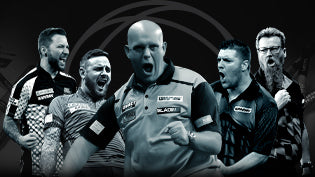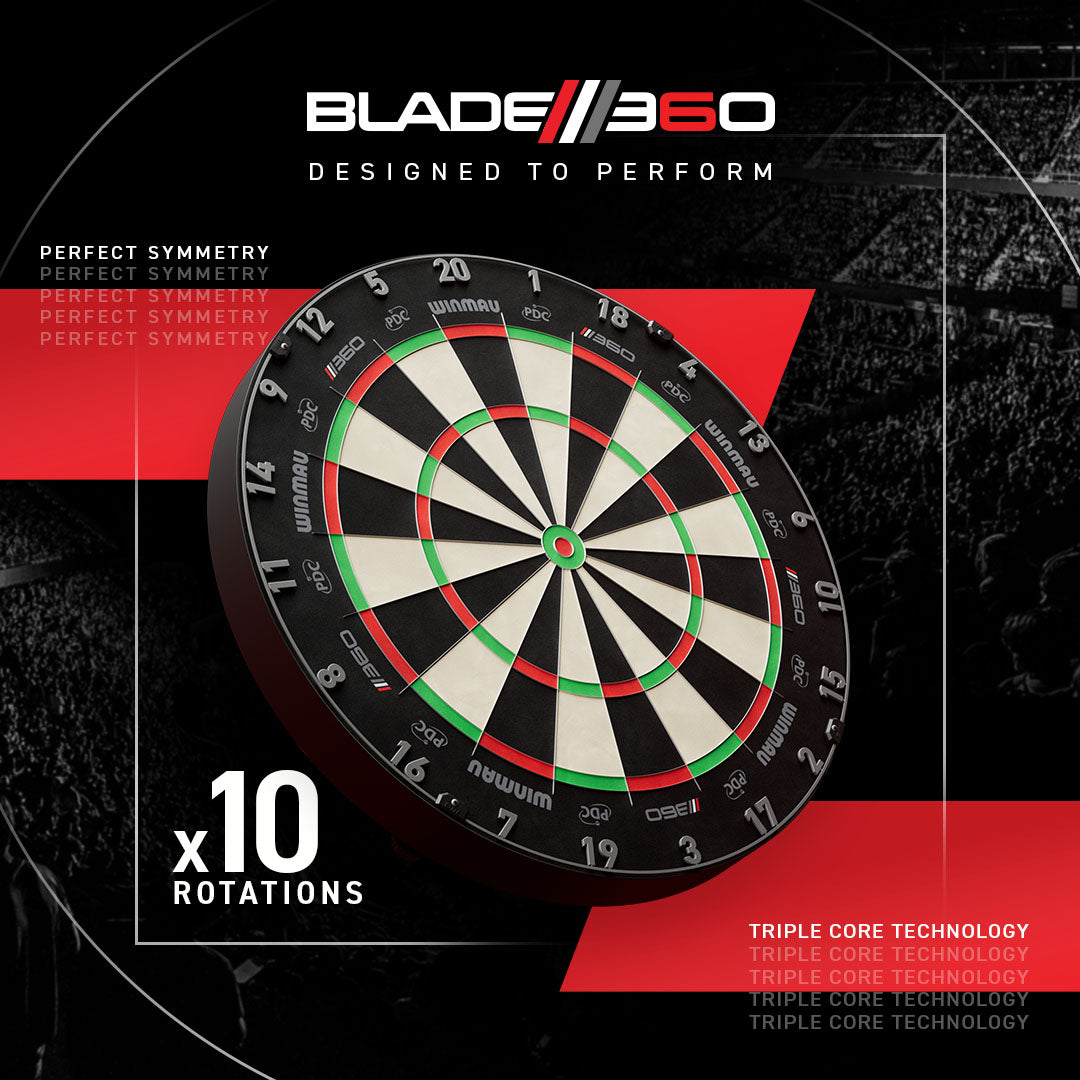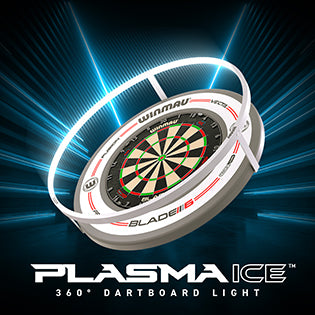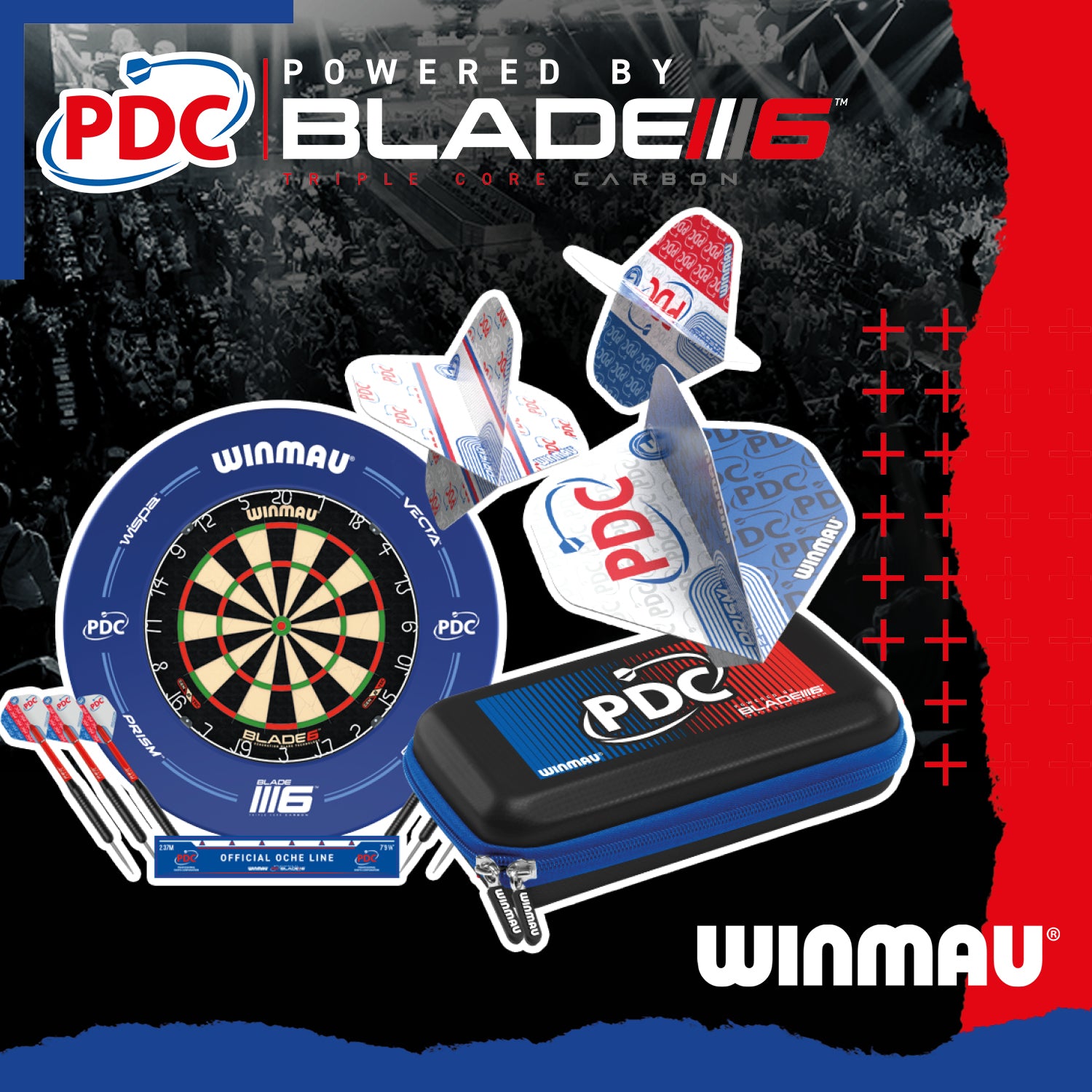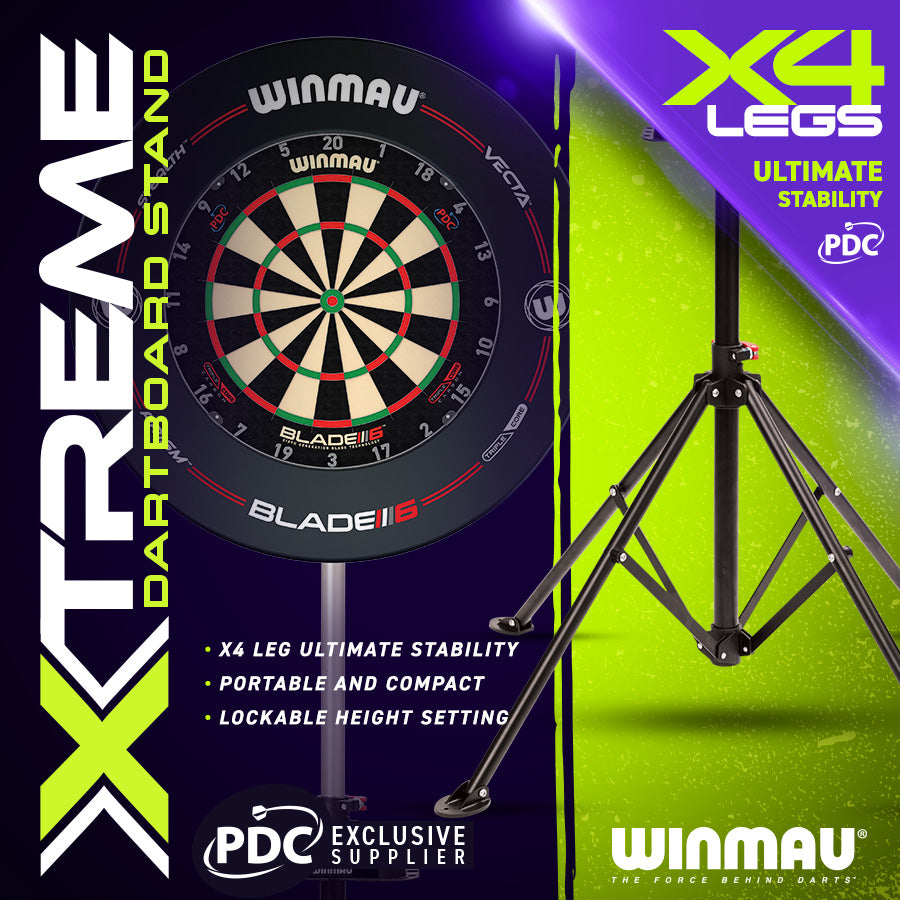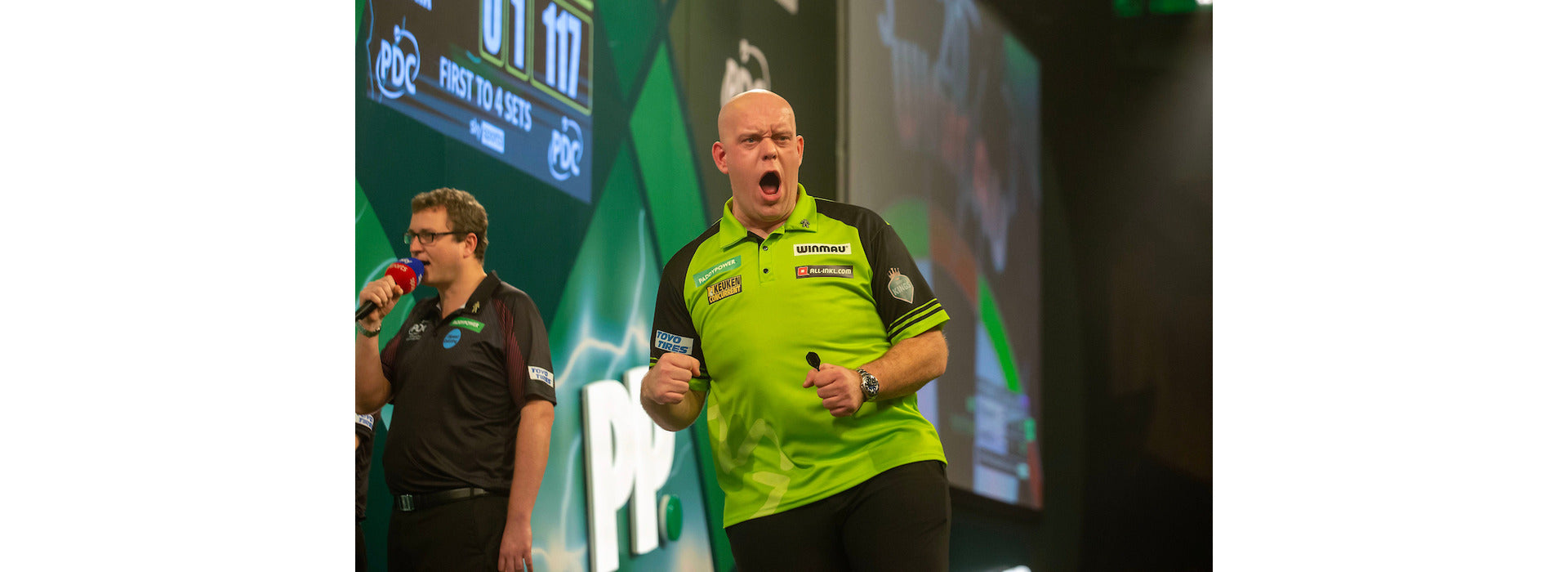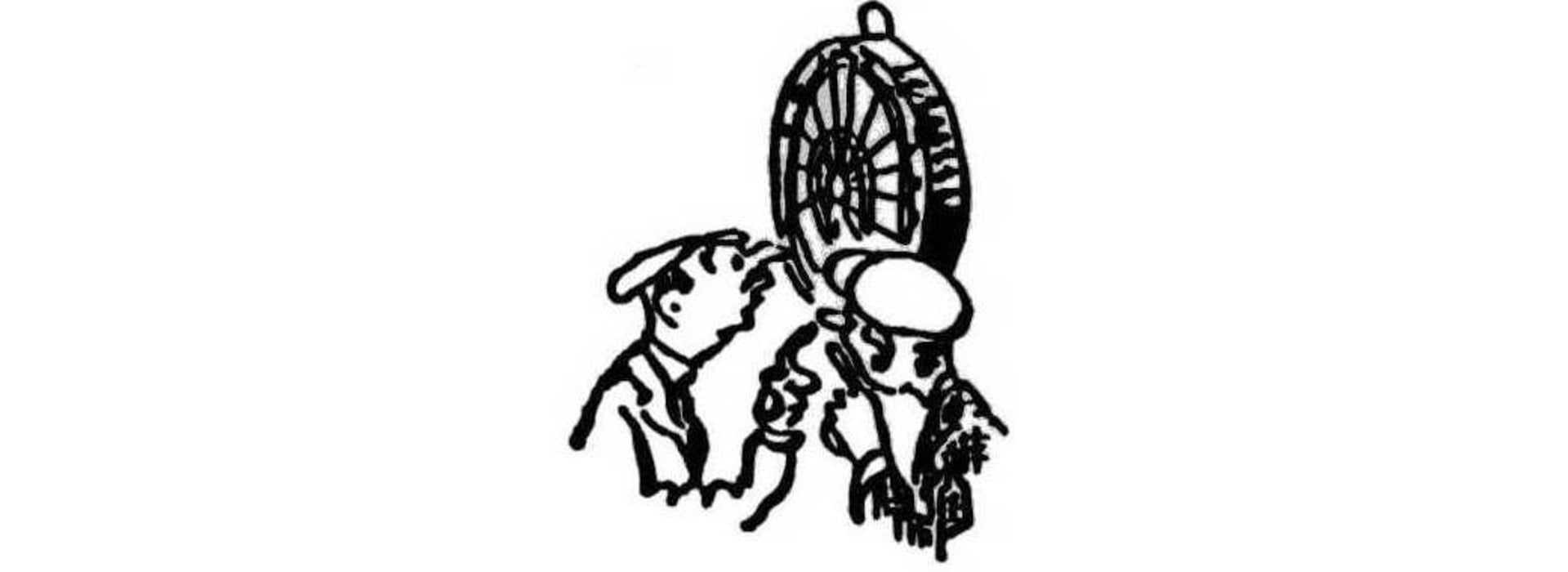
DR DARTS NEWSLETTER - PATRICK CHAPLIN -DECEMBER'23 EDITION
DARTS HISTORY
(aka Dr. Darts’ Newsletter) 
Issue 164 5 www.patrickchaplin.com December 2023
DARTS AND BROADCASTING
THE EARLY YEARS – (1) RADIO/WIRELESS

With all darts fans glued to their television sets during the latter part of December and early January, I thought it is a time to look at how darts was first broadcast in the UK. In this issue I reveal when darts was first broadcast on the radio and then, in next month’s issue, the then new medium of television.
By the early 1920s, the wireless had become one of the most important forms of mass communication in the country and was to play a decisive part in shaping contemporary British society. (The photograph, left, shows Charles Garner, the regular commentator on darts broadcasts. Source: My collection.)
Established in 1922 under the stewardship of Director General Sir John Reith, the British Broadcasting Corporation (BBC) was an independent national institution dedicated to the raising of public taste and played a significant part in standardising British culture. During the General Strike of 1926 the BBC provided a regular and steady supply of news and announcements across the whole of the country, greatly assisting the Government of the day. Without this provision the national course of events might well have been different.
In 1927 the BBC made the transformation to ‘Corporation’ and this action made accessible for the first time many public events from which the BBC had until then been effectively barred. In particular, sport was increasingly broadcast with live coverage of a rugby match at Twickenham, the Grand National at Aintree and the FA Cup at Wembley being broadcast in quick succession that year. Radio had arrived when consumer strength was improving, when most workers had established regular spare-time in which to indulge their hobbies, sports, or other recreational interests. The majority of working-class families, often with the assistance of hire purchase arrangements, were able to afford the price of a radio. By 1932, forty-three per cent of British households – approximately 20 million people – had a radio and by 1939 figures had risen to seventy-five per cent and 34 million.
It was not until 1936 that darts, which was becoming popularised through the press and gaining the attention of all classes, was first broadcast by the BBC. Much of the material broadcast by the BBC held little appeal for the working class, many tuning into the ‘lighter’ programming of the commercial radio station Radio Luxembourg after its inauguration in 1933 to escape the drear Sunday and the rigid attitude to humour of the rather staid BBC.
It was only in the regional programmes that the ‘stuffed shirt persona’ of the BBC was removed and working-class listeners attracted. On Thursday 28 May 1936 at 8.15 p.m., the BBC Regional Service broadcast darts for the first time. A descriptive commentary was featured from The Horns public house, Kennington, London on the finals of the ‘Team Championship of London.’ Neither the Radio Times nor The Listener published a detailed announcement of this broadcasting ‘first.’
By scheduling darts between the BBC Dance Orchestra directed by Henry Hall and the performance of selections from the works of Mendelssohn, Wagner and Berlioz by the BBC Northern Dance Orchestra it is clear that this 15-minute inaugural darts broadcast, although produced by the regional service, ostensibly for the local listener, was not targeted at the working-class but the middle and upper classes; either that or the programme schedulers at the BBC believed that by placing darts between two orchestral performances some of the ‘culture’ might rub off on the working-class listener.
Following the May 1936 broadcast, darts became a regular feature on the BBC Regional network and occasionally known as ‘Ghost Darts.’ The first ‘local derby’ was broadcast on 25 November 1937 between the Hanbury Arms and the Caledonian Arms, Islington and held at the former. On 9 March 1938 darts was broadcast for the first time on West of England radio; coverage of the West of England Championship.
Indicative of the increasing interest in the ladies’ game, the Regional network featured a commentary from Charles Garner, of the National Darts Association, on 19 April 1938 of the finals of the Ladies’ Individual Darts Championship from the Adam and Eve public house, Homerton. One sports author later described such items as ladies’ darts on the radio as ‘esoteric’ and that, even in the 1980s, one sports writer argued that such commentaries remained a ‘minor element’ of sports broadcasting at this time.

In November 1938 F. H. Wallis, the winner of the 1936/37 News of the World London and Home Counties Individual Darts Competition, played ‘All Listeners’ in a novel broadcast from the Alexander Arms, Eastbourne in which Wallis threw three darts; there was a pause while the listeners threw their three darts at home, registering their scores against the champion. As a result of that ‘airing,’ a listener named F. Southerington of Chickerell, near Weymouth, was adjudged the ‘champion of the air.’ The photo above shows Wallis playing at Eastbourne ‘on the wireless’ with commentator and caller, Charles Garner of the NDA just in view on the left. (Photo: My collection.)

Later, on 27th January 1939 the Radio Times announced that, on 30th January, the rematch would take place, face-to-face, ‘Tonight…’ ‘live’ at the Hanbury Arms pub in Islington, London (of which Charles Garner of the NDA, was the licensee), where Wallis ‘will have a chance of getting his revenge.’
On 30th January, the Dorset Evening Echo newspaper reported that the re-match would be broadcast in the ‘Regional programme’ from 8.55 p.m. to 9.20 p.m. that evening and that local player, Southerington (pictured) (With apologies for poor quality) had been
…practicing steadily over a nine feet throw, is in good form just now, and hopes to retain the title. (Adding that…) He will have a number of Weymouth supporters at the match, and among them will be Mr. C. Bartlett of the Elm Tree Inn, who took Southerington to London by car today. The Elm Tree is Southerington’s local “headquarters.
It is interesting that Southerington had been ‘practicing steadily over a nine-feet throw’: indicating that it was a length unfamiliar for him.
After Southerington had lost his BBC title of “champion of the air” in the best of three match, Wallis played an exhibition against listeners. Presumably, ‘exhibition’ meant that there would be no ‘champion of the air’ title.
On Friday 5 May 1939, the first broadcast ‘international’ match was played on the wireless between a team from Torquay, Devon, and a team from Londonderry, Northern Ireland; Torquay winning by ‘three points to two.’ In June that same year playwright and broadcaster Ben Travers and writer and broadcaster A. G. Street commentated on a ‘live’ darts match played over the air between their two local pub teams.

Short talks were the staple sporting fare on radio at this time, often of regional interest. On 5 February 1938 Gilbert Hoare spoke in the Northern network about darts. The Northern service included darts in its ‘Spotlight on Sport’ series on 5 February 1938 and on 4 January 1939, the Welsh service featured P. Lewis talking about darts in the programme ‘A Word about Indoor Games.’ (That programme also included a S. D. Rees talking about skittles.)
The inaugural final of the Lord Lonsdale The People Team Championships held in London in 1938/39 was also transmitted on the wireless. Kevin H. of Harlow, Essex, whose grandfather played for the King Harold pub, Waltham Abbey, who were the first winners of the trophy, told me in 2012 (issue 33) “The thing that always makes people laugh is when I tell them that my Grandfather was on the radio... Playing Darts! (Those were the days!).” (Kevin’s granddad’s final Lord Lonsdale medal is shown, above, right.)
The Licensing World trade newspaper on 26th September reported briefly on that championship whilst also reflecting on the growth of the popularity of darts since the beginning of the decade:
“Twenty years ago few people would buy it or play it. Today about 3,000,000 darts are sold every year and there are 12,000 clubs, with a membership of 750,000. Over 4,000 people flock to Olympia to see a championship match.”
Between the outbreak of World War Two in September 1939 and the end of December 1939, the BBC Home Service broadcast three darts matches featuring the ‘services’ in their widest sense. On 11 October a team match between wardens and firemen was featured. Then, on 24 October, one between the Royal Air Force (Balloon Barrage Squadron) and the Royal Artillery (an Anti-Aircraft Battery) and, on 18 December, a challenge match between the City of London Police War Reserves and the London County Council Auxiliary Ambulance Drivers.

And, of course, darts continued to be played in most theatres of war, whenever the forces could either access a dartboard and darts or make the equipment from whatever was handy, including the trunk of a tree! (Photo (left) shows a group of unknown soldiers resting up in an unknown location, and proudly displaying their dartboard. (Source: My collection.)
The broadcasting of darts on radio on a regional basis reflected the areas in which darts’ popularity was at its highest, often centred on the progress of the News of the World competition usually reported on by the National Dart Association’s, General Secretary, Charles Garner or the more novelty versions such as the ‘live’ darts match played over the air cited above.
After WW2, on the wireless, darts took a back seat to more main stream sports such as football, mainly because the middle-upper-class interest in the game had diminished as the pre-war ‘fad’ of darts was being passed over for something else.
However, that wasn’t to say that the game of darts had disappeared from the airwaves as The Times newspaper continued to publish a listing of both radio and television darts matches throughout the late 1940s. Between May 1946 and November 1947, The Times listed only five matches. On 18th May 1946 the Light Programme broadcast a darts contest ‘Scottish Champs v English Champs’ then on 2nd September the same year, ‘Joe Hitchcock v Jim Pike, from the Town Hall, Acton’ (see extract from the programme, right) and, on 7th June 1947, at 8.30-9.30 p.m. ‘Darts: Final of the National Teams Championship of England and Wales for the Lonsdale Challenge Trophy.’

The final major darts broadcast for some years was on the Light Programme on 20th September 1947 when the rematch of Pike versus Hitchcock took place from the Horticultural Hall, London. After that broadcast, darts appears to have more or less disappeared from the radio/wireless.
During the 1940s television was making great strides and during the above period, darts appeared eight times, one of them coupled with shoveha’penny!
NEXT ISSUE: I will look at ‘Darts on TV’ and explain why the Alexandra Palace (‘Ally Pally’) became the real home of darts.
THE DART-THROWING BARBER – ANSWERS TO MAT COWARD’S QUESTION

In issue #164, subscriber Mat Coward, author of the 2001 pub-darts-related murder mystery In and Out (amongst other books) responded to my request for readers to let me know where you bought your first set of darts. Mat bought his from a barber's shop in Weston-Super-Mare, where he then lived circa 1977.
After describing the barber shop, Mat admitted that he could no longer remember the make of darts but reckoned that they would have been probably 21grm. At the end of his email, Mat wrote “I'd love to know if any of your other readers remember this place, and have more details about it.”
Almost immediately, Darrell Brown wrote
Hi Patrick. This is about the chap from Frome who bought his first set of darts in Weston-Super-Mare. The barber was a Mr. John Tucker and the shop as well as being a barber’s it was also John Tucker’s darts centre where he sold boards, canes, flights, and darts.
John was also the Treasurer of the Weston and District Men’s Darts League and he also played darts in the League. His shop was 5 Orchard Place, Weston. Sadly, John passed away quite a few years ago. i hope this helps you.
In a bid to clarify things for Mat, I also turned to one of my favourite methods of looking for information – writing to the local newspaper! Hardly known of these days but back when I began researching darts back in the 1980s, this was one of the best ways of seeking out local knowledge. Thus, I dropped a note to the ‘Letters Page’ of the Weston Mercury and awaited any responses.
And, thankfully, people still read newspapers and even the letters pages as Robbie Orr emailed me, armed with all we needed to know about Mr. Tucker (or most of it). Robbie wrote:
Hi Patrick. I read your letter to the Weston Mercury (published 16th Nov 2023) and can add a bit of information around the dart-throwing barber.
His name was John Tucker and his barber shop was in Orchard Place, Weston-super-Mare. I bought my first set of tungsten darts from John in 1979 and, like your contact in Frome, got to try them out on the dartboard hung on the back of the shop door. He would quite happily stop mid-haircut to throw three darts at the bull.
In the early 80s, I used to pop in and buy flights and stems from John and, if he was quiet, we'd have a quick chat and a throw. John (as well as being known for the old short, back and sides) was a great player in his day and I believe he won the Weston & District singles championship in the mid-seventies. I seem to recall him using a torpedo-shaped dart with the old feather flights, when I first met him.
He was a bit ahead of his time as he threw his darts in very quick succession, relying on muscle-memory, as they do at the top of the game today. No aiming each dart for John. He was also a bit of a character and, if you played him in a match, he always had a pocketful of change or some keys that he could jangle whilst you were throwing.
Remember when everyone gave you 'best of order' when you were throwing, back in the day? The jangling of coins/keys stood out if you weren't 'in the zone'.
I was away from Weston for a few years in the 80s and I don't have any memories of John from the late 80s (and beyond) but, of course, he retired and the shop closed. John will have had a few mentions in the Weston Mercury in the 70s, especially when he won the local singles.
I hope this is of some use. Cheers, Robbie Orr
‘Some use’? Robbie that’s great information. Thanks.
Dr. Eddie Norman emailed me
“In the latest Darts History, the story of the barber’s shop brought back memories, The House of Darts International supplied him with his darts products and Peter, my brother, would drop them into him as his wife came from Weston-Super-Mare and he would deliver on his regular visits to visit her parents, deliver and also get a haircut. Pete could have filled in all the blanks on the barbers’ shop for your writer but unfortunately is no longer with us. Kindest Regards.”
Thanks to everyone who responded to my query. All I need now is a photograph of John Tucker to complete the picture. Can anyone help?
APOLOGIES TO JERRY (AND JERRY)

My apologies for naming subscriber Jerry Leather in the title of my article ‘And from the U.S….’ in last month’s DH. Jerry Feather, when I should have typed Jerry Lucky. Jerry F. was good enough to write, “Hi Patrick, in this latest article I did not write you & picture is not me.” This enabled me to immediately apologise to Jerry F. and alert Jerry L. to the mistake. It also gives me an excuse to republish the photo of Jerry Lucky with his wife Sue and daughter Rachel enjoying Flight Club in Vegas.
SHAY O’BRIEN – ONE OF THE BEST DARTS PLAYERS IRELAND PRODUCED

Long-time subscriber, Tom Firth, emailed me to say:
“Hi Patrick. It has been a while. [Indeed, it has Tom.] Having read your recent email [Darts History] about Shay O’Brien (pictured left) especially when he was in his prime, he was one of the best darts’ players Ireland has ever produced.
With not as many events to attend as nowadays, he stood out from amongst the rest. I am talking of when we played with The Workingman's Club along the Dublin Quays. He was probably the most consistent dart player Ireland had ever produced at that time. This brings me to ‘Mr. Consistency.’
[Bill Lennard, known popularly as ‘Mr. Consistency,’ is seen here (right) being presented the trophy for winning the Lancashire and Cheshire Divisional champion title 1975/76 presented by an unidentified local dignitary. Image © News of the World. Used with permission.]

When Ireland played England, could have been 1975/6, I remember watching him beat Billy Lennard, 2-0 in what was the Hotel Cill Dara on the Navan Rd. It was the year Billy Lennard won the News of the World. Unfortunately, Billy beat Shay in London that year in the News of the World Finals.
[I was at Alexandra Palace on 8th May 1976 that Shay met Bill Lennard, the Lancashire and Cheshire Divisional champion, in the quarter-finals of the News of the World. Both men had been given a ‘bye’ in the first round and thus moved straight into the quarters. Bill was on great form that day and beat Shay 2-0.] Tom continued:
I was lucky enough to play with Shay for about 3 years with Donohoes [in Dublin], until I fell off a motorbike and dislocated my right elbow. End of Darts progress for a while.
A BOOK FOR CHRISTMAS AND BEYOND

If you are still looking for something ‘darts’ to buy your nearest and dearest, or are looking for a new darts book, I can highly recommend England International and former PDC player, Scunthorpe’s Dave ‘Ladders’ Ladley’s autobiography Ladders to Climb.
The name may not be familiar to all darts fans. That’s because he has been what I would call a ‘journeyman’ darts player: a man who loves the sport, travels wherever the next match takes him, enjoying every moment, has beaten a number of the best names in darts whilst on the PDC tour but not, as yet, won a major title.
But as far as I am concerned, the fact that Dave has never won a ‘Big One’, doesn’t detract from what is a fascinating, honest, and at times a very personal record of the ups and downs of professional darts and the stress of major tournaments and dealing with anxiety and tragedy in his personal life..
With over 300 pages, numerous b/w and colour photos, an Introduction by Humberside’s legendary Tony Richardson and ‘a few words’ from Peter ‘One Dart’ Manley, Ladders to Climb puts many previous darts autobiographies in the shade.
Dave’s book costs £10 (plus postage) and details can be found on Dave’s Facebook page or direct by email on ladderstoclimb@gmail.com.
A VERY HAPPY FESTIVE SEASON TO YOU ALL!
MY RESEARCH IS SPONSORED BY

NOTE: Text © 2023 Patrick Chaplin or as shown. Images © Patrick Chaplin or as stated or sourced. Neither text nor images can be reproduced without prior permission of the copyright holder(s). Sponsors website: winmau.com.




